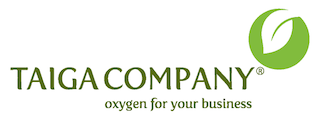What is a DRP And Why Do You Need It?
A disaster recovery plan or DRP is not the same as a business continuity plan (BCP). It’s so easy to confuse the two and yet, if you knew the subtle differences you will never make this mistake again. In the hierarchy of recovery plans, it goes something like this. A crisis communication plan (CCP), then a disaster recovery plan and finally a business continuity plan. A DRP can be considered as a recovery plan that will be useful during the event. As an example, perhaps a fire is raging in your warehouse, then you activate your DRP and begin to limit the damage being done. But why would you need this if you already have a BCP and a CCP? Here are the subtle differences.
What is being harmed?
The first thing you do is get your managers to tell you what are the key mission activities in their respective areas. For example, for the IT team to function, they require power to keep the servers ticking over. So some kind of emergency power generator specifically for the IT infrastructure is required. For the financial team, they need a connection to the financial markets and your business bank account, so some kind of internet access to the banking mainframe is required. You could have an emergency internet service provider that can provide support for your tablets or laptops so your team can function while away from work. So as you can see, key mission activities need to be fully understood before a recovery plan can be forged.
Reputational recovery
So as a warehouse is being flooded, you need to let customers and the media know what is going on. Customers haven’t gotten their orders and they get angry during a crisis which they have no idea is happening. That isn’t their fault, it’s your own. Working with a reputation management agency will let you know what kind of communication types you have at your disposal. They will form a communication plan which you can use to communicate with the media, customers, investors and the market, letting them all know what is going on and what you’re doing to save as much as you can. Reputational damage is long-lasting, so it’s very important you are prepared.
Going to the transition
So you have limited the damage of a crisis event, but now you need to get back online. Let’s say you have pumped out the floodwaters in your warehouse, but how will you get it up and running again? You need to transition to your BCP. This will be things like doing a health and safety risk assessment of the damage, replacing broken items, getting power back on and helping employees who are hurt, etc. This transition is done by completing a checklist of DRP activities. This is how you know when you can move on when the event is over and the damage limitation activities are completed.
A DRP is the compilation of activities done during a crisis event, in order to limit the damage that is being done. Every business needs one so you can save as many assets as possible in real-time.


